
Two time Canadian National Enduro Champion Remi Gauvin is one of many athletes who made the move from the downhill circuit over the past several years, and his results prove it was a successful switch. While he earned some impressive rankings on the dual-crown bike, his current title as the “fastest North American in the EWS” for 2019 currently tops those achievements.
Gauvin halved his 2018 ranking of eighth place overall in the EWS with a hard fought fourth place at the close of the 2019 season. He managed that fourth spot, despite placing outside of the top twenty at two events, by achieving consistently high rankings at all of the other six races. His best result for 2019 was at round two in Tasmania where he took third place on three of the six stages to finish in third for the weekend. Back on home soil in Whistler, BC he claimed 5th place and was the fastest Canadian on track by a long shot.
When he’s not pinning it down some beautiful ribbon of singletrack “Remi the Semi” might be found brewing up a fresh espresso. He really loves coffee. So much so that he brings his own brew kit with him to races. Get more of his story, along with a sweet bike check of his 2020 Rocky Mountain Slayer below.
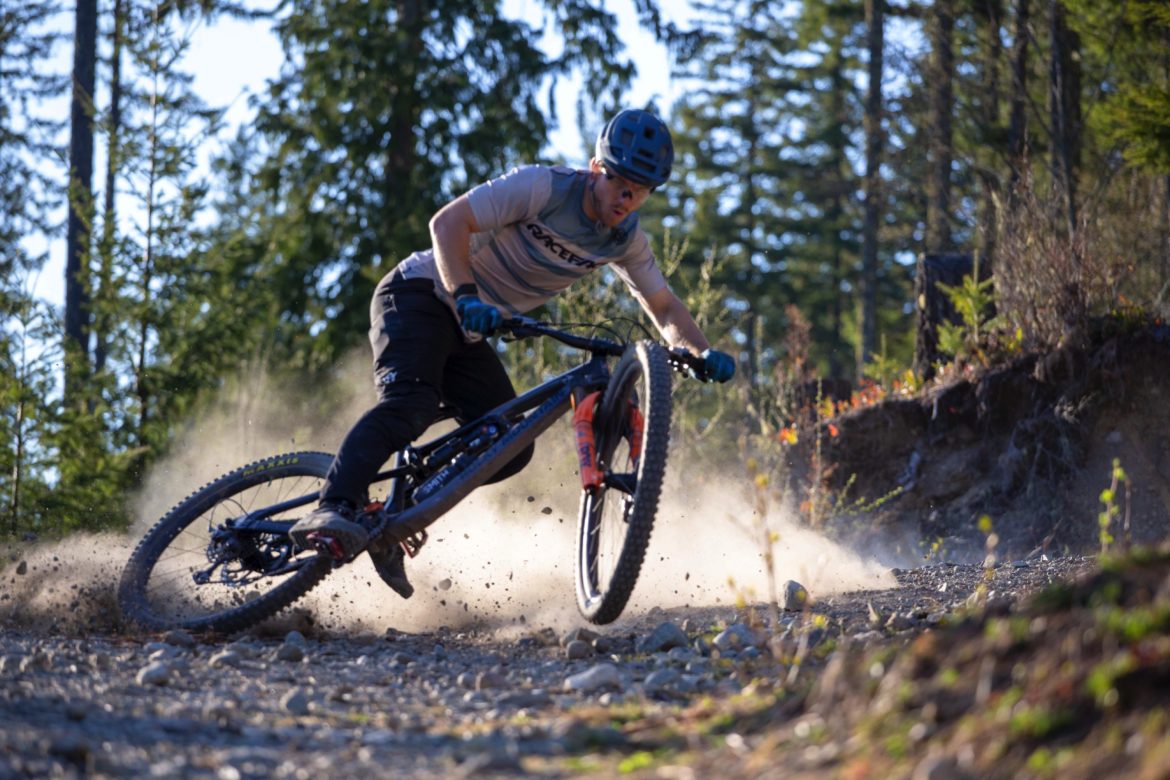
What initially piqued your interest in mountain bike racing?
To me getting into mountain biking was just a natural progression. There was no one moment for me. It started with ripping around in front of my house with my first bike which led to building jumps out of plywood and 2x4s, to discovering the local dirt jumps in my hometown to my dad taking me to my first local mountain bike race. I think my parents could see that I enjoyed riding my bike and definitely tried to find some new avenues to pursue that interest. They took me to the local mountain bike races as a kid where I remember watching the DH and doing the kids race. I think I raced my first local DH race when I was 14 on my Haro hardtail. From there I think I was hooked.
What do you miss about racing DH, and conversely, what elements of enduro do you prefer over DH?
There are definitely pros and cons to both disciplines. The thing I miss most about DH is the overall speed that you are able to carry on the track after practicing it over the weekend. By your race you know every inch of the track and are able to adapt to it and (hopefully) are able to put together a run that is near to your limit of that track and your to ability.
Generally in enduro, you don’t get enough practice to find the limit of the track during practice, so you have to rely on your ability to get up to the speeds you need to race at during your race run, which can be quite intimidating but also very rewarding! You also get to ride so much amazing trail in enduro. You definitely never get bored of any track out there.

What factors most contributed to your Canadian Enduro Champion title in 2019?
The venue at Enduro Nationals is somewhere I have been going to race DH ever since I was a grom. I actually won Downhill National Champs there as a Junior in 2010. It’s somewhere I just have good feelings and am comfortable at. I think that’s the main reason I am able to ride fast there. There is also a switch that gets turned when you go from racing on the world stage to a national one. The switch that goes from “I want to win” to “I have to win: just because you are racing all your friends.
What is your strong skill in enduro?
I would say one of my strengths is my strength haha, and anything high speed with a bit of support in the corners. Wherever there is a berm I am able to ride really damn fast. It is probably my upbringing in BC bike parks.
What element of enduro do you find most challenging?
I am not as comfortable with technical switchbacks and European “hiking trails.” Where I live I am so used to trails having a bit more flow and fewer speed checks. If the trail has a lot of flow killing features I start to question how fast I am actually going on the track.

What are your thoughts on the recently released Fox 38? Is it as much of an improvement as the original 36 was back in 2005?
I wasn’t riding on Fox back in 2005 but ever since I started to ride Fox in 2016 there has been noticeable changed to the 36 every year. Every year the fork has gotten better and better and we are able to go faster and faster. I would say the 38 has definitely been a leap forward rather than a step. The speeds we are starting to be able to go mean that we require a stiffer chassis and the 38 has fulfilled our needs in that regard.
Have you tested a mixed wheel setup? If so, what did you think?
I haven’t tried a mixed wheel setup since my 2004 Specialized Bighit with a 24” rear wheel! Its something I am interested in but haven’t felt the need yet as our bikes work pretty damn well!
I saw that you’re switching to the Rocky Mountain Slayer for 2020. Will you be on that bike for every enduro?
Yeah, I am riding the Slayer currently and planned to race the bike for the first few rounds. I think the main reason that I was interested in racing it is that the geo numbers are a bit more aggressive and seem to suit me better. Its a longer, lower, slacker bike, made to go fast and eat up terrain. But with every change, there are tradeoffs. It’s heavier than the Instinct and definitely more bike to maneuver. But I think the trade offsare worth it.
What is the most important skill for aspiring enduro racers to work on?
I think that fitness is an easy thing to address and makes a huge difference when you get on the clock. Other than that I think that being good at reading terrain quickly is one of the greatest skills necessary for enduro. In order to work on that you have to ride new trails often, not just the trails that you have ingrained in your mind.

You’re pretty passionate about coffee. What’s one of your favorite roasters and what do you like about it?
I am! It’s something that makes me excited to get up in the morning and something that I have learned a lot about over the last few years. Currently, I am drinking a lot from our local [Squamish, B.C.] roaster Counterpart Coffee because of the convenience during this time. They are delivering coffee right to our door! They are also badass roasters. Right now I have a Guatemalan from them that is amazing.
What’s something that most people in the mountain bike community don’t know about you?
That I am not from Quebec or France. Most people think that I am a Quebecois and that I speak French. Although it would be great, I speak very little French. I grew up on Vancouver Island. My father grew up in Quebec but moved to the USA, then to BC when he was 14 years old (He’s in his 70s now). My mother is a Kiwi (from New Zealand) and I even have Kiwi Citizenship.
Given the changing race season, are you re-planning the summer a bit?
Right now we are just taking the summer day by day. There are too many unknowns at the moment to plan ahead too far. If things start to return to normal but racing is postponed I would definitely like to do some trip in British Columbia to ride some new places. There is so much riding here that I haven’t done.

How did you feel about the DH race in Les Gets last season? Do you hope to get back on the DH bike more this year?
Les Gets was probably one of the highlights of last season. It was awesome to do some more DH racing. I was stoked to qualify and end up 42nd which is right up there with my best World Cup results, but it made me realize that if I wanted to do much better than that I would probably have to completely focus on DH rather than just show up at a World Cup with a few days on the DH bike under my belt. I doubt that there will be time this year for me to race any DH. I imagine that if we go racing there will be a lot of overlap with the EWS and World Cup DH calendars so it will be tough to do both. But I would love to do more in the future.
You recently recorded a video talking about posture and body position on the bike. What is important to think about while riding your bike?
Good posture on your bike is actually pretty similar to good posture off your bike. Athletic stance with your hips hinged/unlocked, glutes engaged, and a flat and strong back. This is the most powerful position for you to take a hit or move your body to react to the terrain. Good posture on the bike is not always the most comfortable or the most natural. You have to remind yourself again and again. Very similar to looking forward on the bike where you also have to remind yourself constantly.
What trail or system should readers check out in Squamish?
Oh man, there are so many trails here. The best bet would be to go to Corsa Cycles here in town and ask them what is running well. But if you head up to the Diamond Head trail area above Quest University you can’t go wrong!
Bike Check: Remi’s Rocky Mountain Slayer
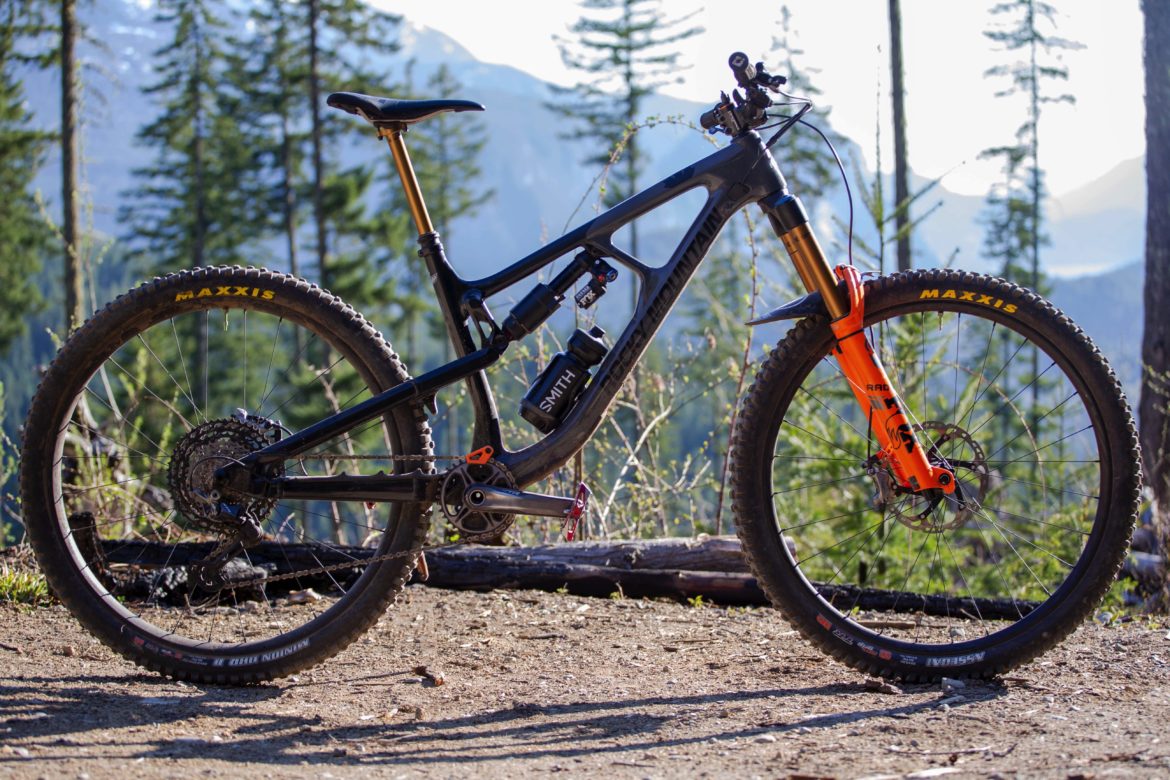
Here are some of the specs from this massive gravity beast.
- Cockpit: Remi runs a 760mm wide handlebar attached to a 40mm stem.
- Squish: All new Fox 38 fork with 115psi at 170mm and a Fox Float X2 with 215psi.
- Rubber: Maxxis Assegai with 22psi and a Cushcore insert up front and 24psi in the rear Minion DHR II with Cushcore.
- Power: The caffeine-fueled Canadian spins a 34t ring on 170mm XTR cranks.
We would like to thank Remi for sharing some of his story, and wish him the best of luck with whatever the 2020 season brings.
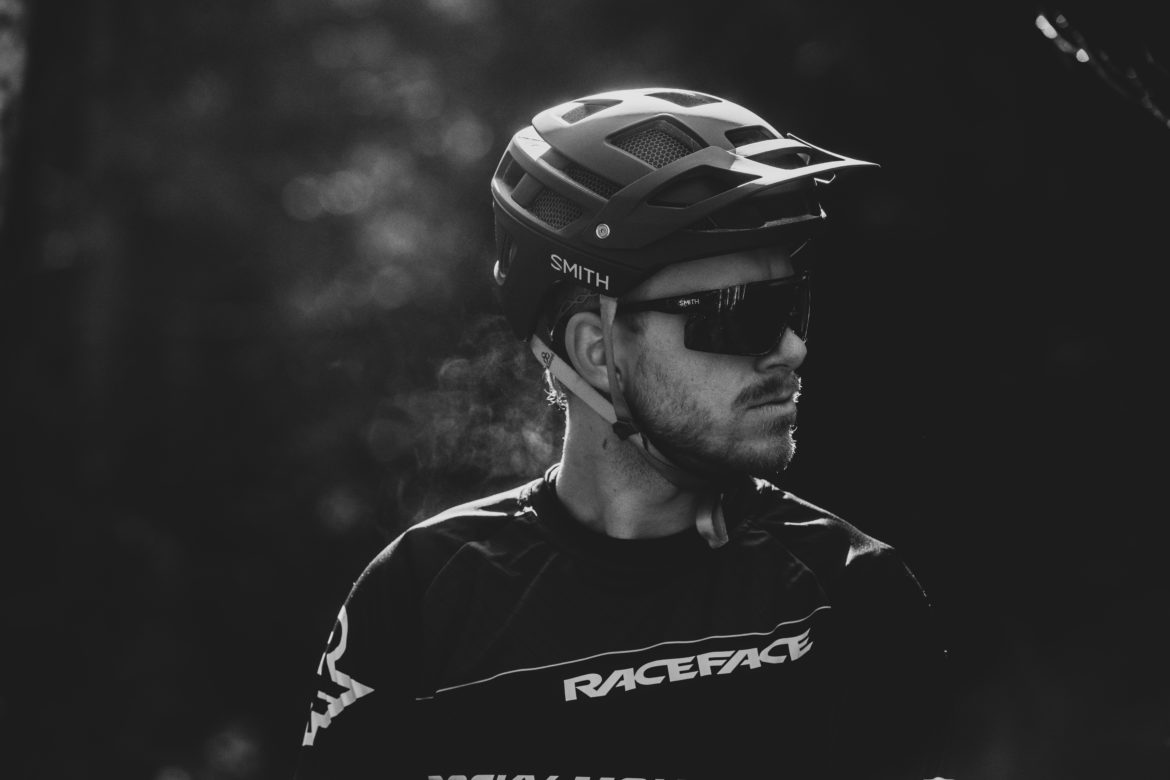











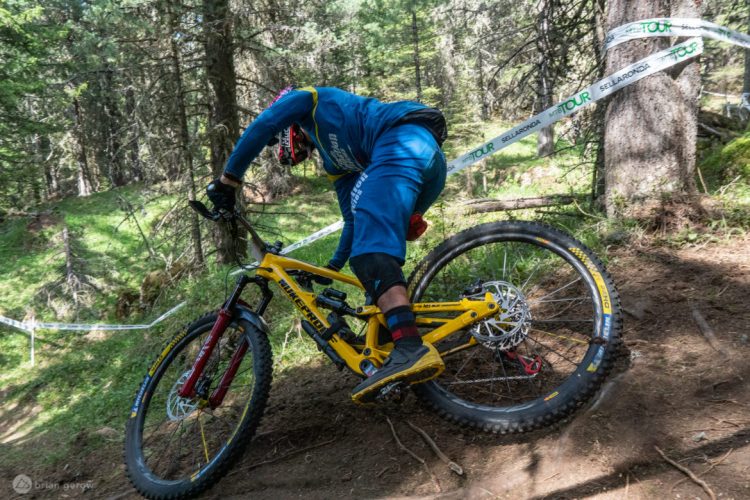
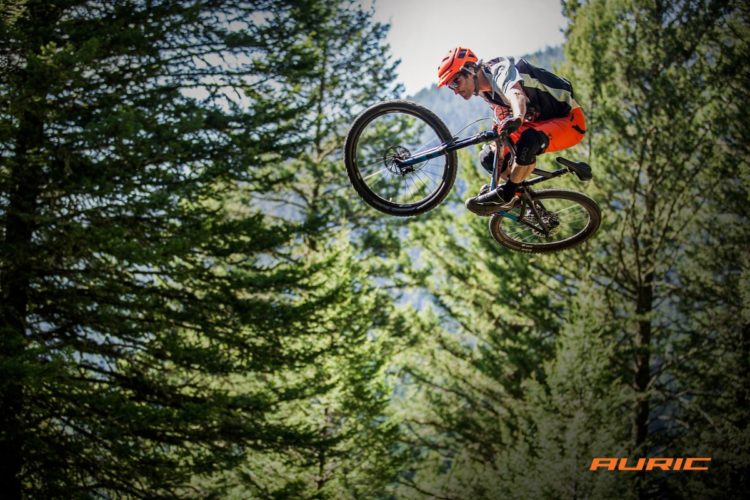


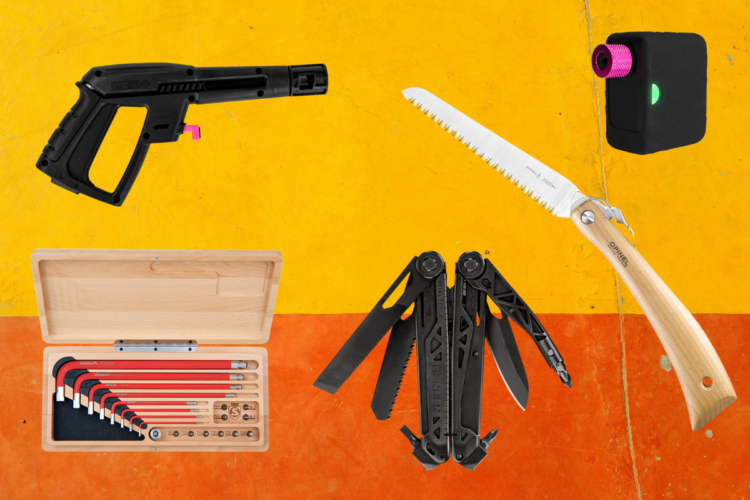
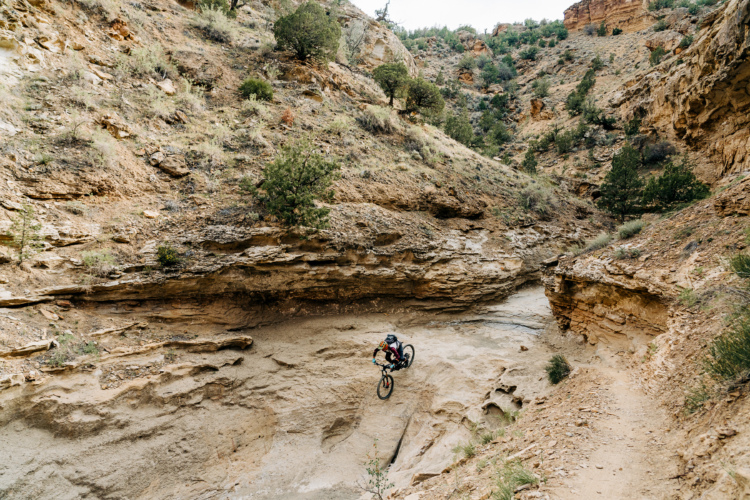


0 Comments